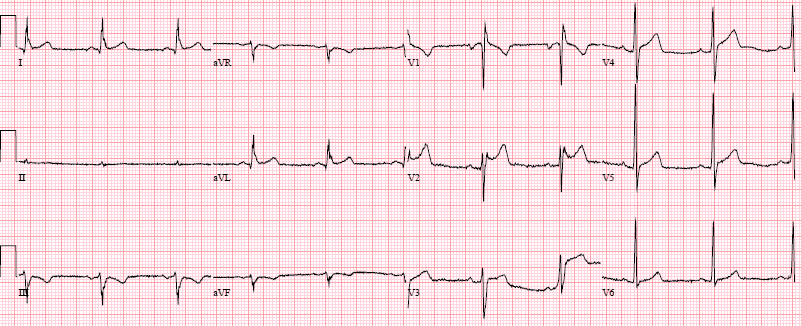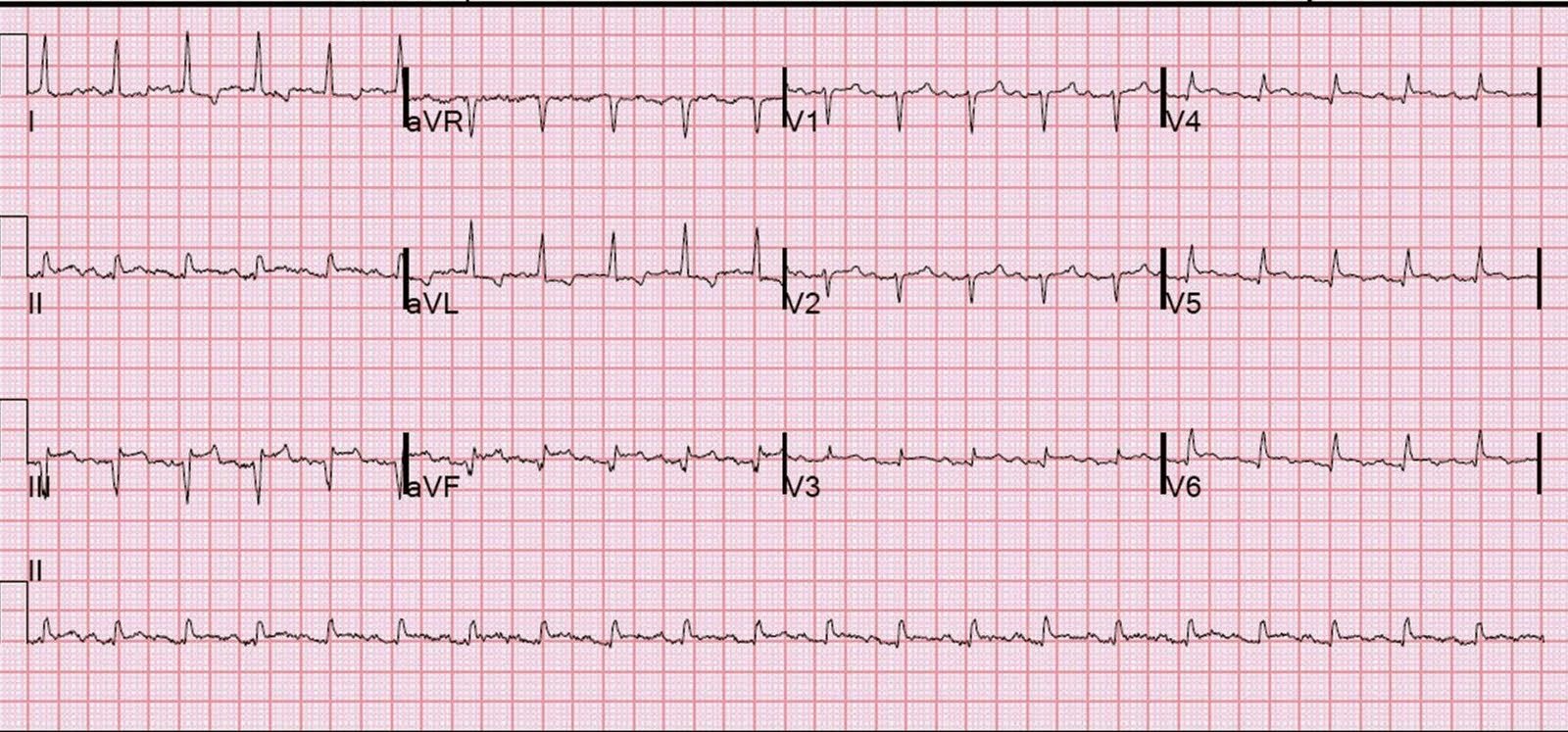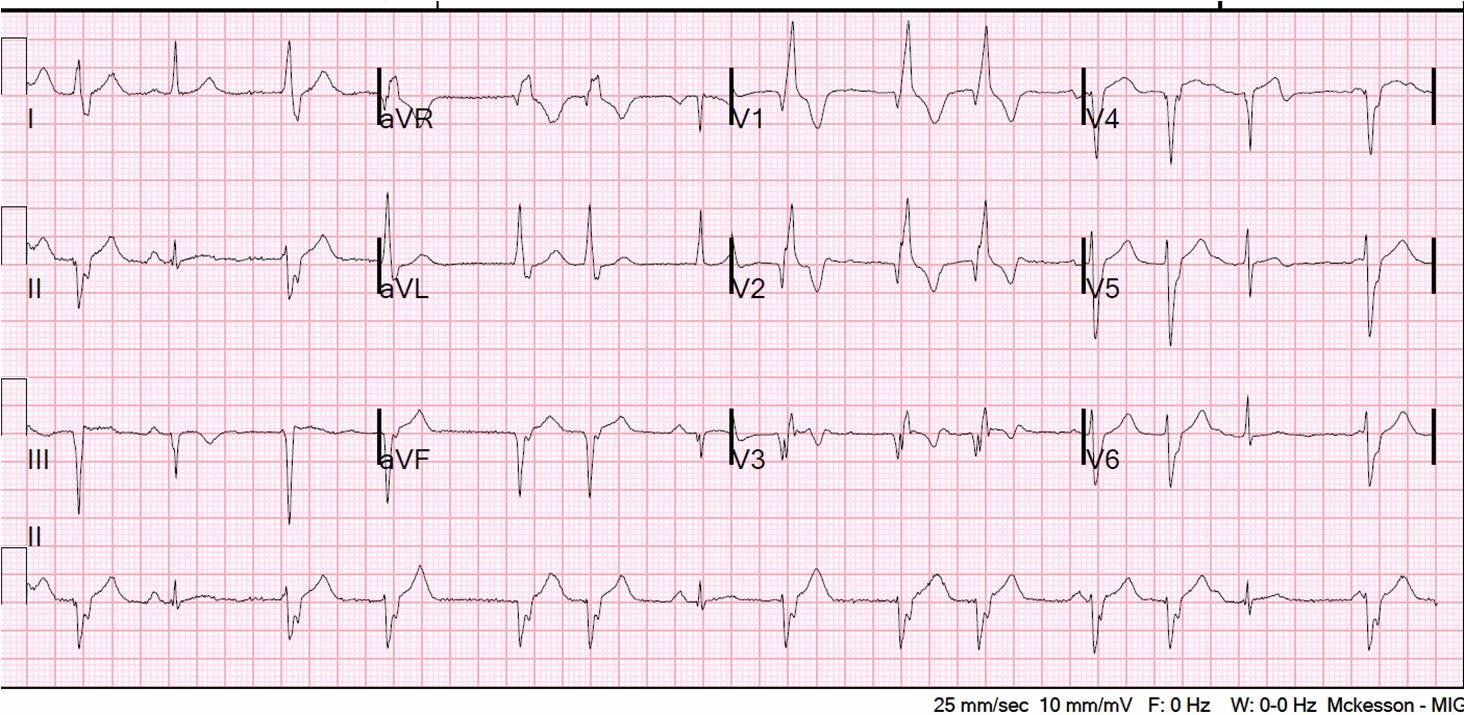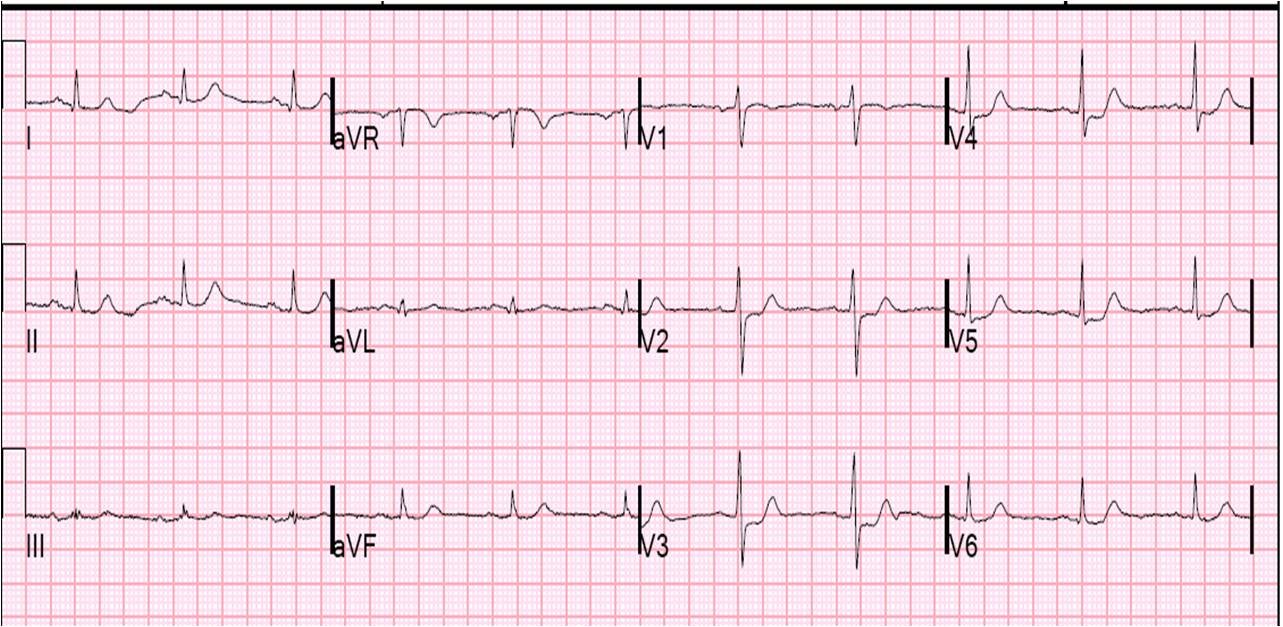This is courtesy of Mohammed S. Alo, who kindly let me reproduce a case from his blog (Mohammed Alo’s blog).
This is a 40 year old male with chest pain. The cardiologist was called for management of a STEMI:
First, when assessing any ST-T abnormalities, one must determine if they are “primary” (due to pathology such as ischemia or hypokalemia, etc.) or “secondary” to an abnormal QRS. And here the QRS is abnormal. Then, think if it conforms to any known pathologic morphology. If you do, and you are aware of the 3 forms of Brugada syndrome, you will see that this is very similar to Type II Brugada.
Here is another case with “saddleback” ST elevation.
Here are the 3 types:
Type I: (“Coved type”) V1 has an incomplete RBBB, a wide R’ wave, a downsloping ST segment, and in inverted T-wave, like this:
Types II and III) These have a saddle back ST-T wave, as in the case presented. The ST segment is at least 1 mm in Type II and less than 1 mm in Type III
There are also variants of early repolarization that can mimic Brugada. Here is one that mimics type III Brugada (again, sorry it cannot be enlarged):
Case conclusion: the man did indeed have Type II Brugada ECG, not Anterior MI.
Brugada pattern ECG does not necessarily mean the patient has Brugada syndrome. Here are the 2002 consensus diagnostic criteria for Brugada syndrome.
Type I Brugada
Appearance of type 1 Brugada pattern in more than one right precordial lead (V1-V3) in the presence or absence of a sodium channel blocker, and at least one of the following:
1) Documented ventricular fibrillation
2) self-terminating polymorphic ventricular tachycardia (VT)
3) Family history of sudden cardiac death at <45 years
4) Type 1 ST segment elevation in family members
5) Electrophysiologic inducibility of VT
6) Unexplained syncope suggestive of a tachyarrhythmia
7) Nocturnal agonal respiration
Type 2 and type 3 Brugada syndrome — a type 2 or type 3 Brugada ECG who meet both of the following criteria [7]:
1) Appearance of type 2 or type 3 ST segment elevation (saddle-back type) in more than one right precordial lead under baseline conditions, with conversion to type 1 following challenge with a sodium channel blocker.
2) One of (a-g) above.
•Appearance of type 1 ST segment elevation (coved type) (figure 2) in more than one right precordial lead (V1 – V3) in the presence or absence of a sodium channel blocker, plus at least one of the following:
a) Documented ventricular fibrillation
b) Self-terminating polymorphic ventricular tachycardia (VT)
c) Family history of sudden cardiac death at <45 years
d) Type 1 ST segment elevation in family members
e) Electrophysiologic inducibility of VT
f) Unexplained syncope suggestive of a tachyarrhythmia
g) Nocturnal agonal respiration







Are there any hints on that final ECG that it was early repolarization and not Brugada, or is it truly unknown until the patient is administered a sodium channel blocker in the EP lab?
I was inspired to revisit this case as I was reading through Marriott's 8th ed. of "Practical Electrocardiography" this evening and stumbled across an example of "early repolarization" in a healthy 32 yo dentist that looks rather like Brugada. Seeing as the book was published in '88, before Brugada was a recognized entity, I wish I could see if the gentleman has remained healthy the past 22 years.
It may not matter. Types II and III Brugada may not be particularly dangerous. See this study:
http://eurheartj.oxfordjournals.org/content/25/10/874.abstract
There may be no difference between saddle-back early repol and types II and III Brugada. Early repol is also associated with increased long term mortality. Perhaps they are similar entities?
STEVE – Excellent examples of Brugada! – plus interesting accompanying histories – Thank you for posting.
My reading suggests the same as the last sentence in your reply to VinceD – namely that early repol in a sense may be related in some form to Brugada (with similarity in some aspects of the J-point abnormality they both cause – https://www.kg-ekgpress.com/ecg_-_early_repolarization/#Is%20ERP%20BENIGN%20-%20Heading )
dear mr. Smith, how can I contact you? can I send you my ECG? I'm male, 25 years old, I'm in Vietnam. I was dianosed to have Brugada type II since 5 years ago, after test with Flecanide. And sice that day, my life is so terrible. There was nothing happen to me but I keep imagining about the death. I want to ask you, is there any case in wrong dianose in history? I really neeed your counsel, please tell me how to send you my ECG. thank you so much, god bless you.
I cannot give you recommendations over the internet. You must seek the advice of a specialist. Your biggest problem is probably unwarranted worry. See an expert.